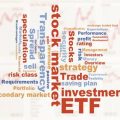Understanding Mutual Funds and ETFs
For UK investors seeking to diversify their portfolios and optimise long-term returns, understanding the nuances of mutual funds and exchange-traded funds (ETFs) is essential. Both investment vehicles pool money from multiple investors to purchase a broad range of assets, such as shares, bonds, or other securities, thereby offering instant diversification and professional management. However, there are key differences and similarities that UK investors should be aware of when considering these options.
Mutual funds in the UK, often referred to as OEICs (Open-Ended Investment Companies) or unit trusts, are professionally managed collective investments. Investors buy units or shares directly from the fund at its net asset value (NAV), usually priced once per day. This structure allows for continuous issuance and redemption of shares based on investor demand.
ETFs, on the other hand, are also pooled investment products but are traded on stock exchanges much like individual shares. This means they can be bought or sold throughout the trading day at market prices, which may fluctuate slightly above or below their NAV. ETFs typically track an index or specific sector and have gained popularity due to their transparency, liquidity, and generally lower costs.
While both mutual funds and ETFs provide access to diversified portfolios managed by professionals, they differ in terms of pricing mechanisms, trading flexibility, and fee structures. Understanding these distinctions is crucial for UK investors aiming to build robust portfolios aligned with their financial goals and risk tolerance.
2. The UK Investment Landscape
Understanding the UK investment landscape is essential for building a robust and diversified portfolio, especially when considering mutual funds and ETFs. The UK market has its own unique characteristics shaped by regulatory frameworks, popular platforms, tax-efficient investment vehicles, and distinct terminology.
Regulatory Frameworks
The Financial Conduct Authority (FCA) is the primary regulatory body overseeing investment products in the UK. It ensures that mutual funds and ETFs comply with strict standards to protect investors. Funds that meet certain criteria are classified as UCITS (Undertakings for Collective Investment in Transferable Securities), providing an additional layer of security and harmonisation across Europe.
Popular Investment Platforms
UK investors have access to a range of online platforms, also known as “fund supermarkets,” which allow you to buy and manage mutual funds and ETFs easily. Leading options include Hargreaves Lansdown, AJ Bell Youinvest, Interactive Investor, and Fidelity Personal Investing. These platforms differ in fees, fund choices, and usability. Below is a comparison of some key features:
| Platform | Account Types | Fund Range | Annual Platform Fee | Dealing Charges |
|---|---|---|---|---|
| Hargreaves Lansdown | ISA, SIPP, GIA | Extensive | 0.45% (tiered) | £11.95 per trade (shares/ETFs) |
| AJ Bell Youinvest | ISA, SIPP, GIA, LISA | Wide | 0.25% | £1.50–£9.95 per trade |
| Interactive Investor | ISA, SIPP, GIA, JISA | Diverse | From £4.99 per month (fixed) | £5.99 per trade |
| Fidelity Personal Investing | ISA, SIPP, GIA, JISA | Broad Selection | 0.35% | No dealing charge for funds (£10 for shares/ETFs) |
Tax Considerations for UK Investors
The UK offers several tax-efficient wrappers for investing in mutual funds and ETFs:
- Stocks & Shares ISA: All capital gains and dividends are free from UK tax up to the annual ISA allowance (£20,000 for the 2024/25 tax year).
- SIPP (Self-Invested Personal Pension): Contributions qualify for tax relief at your marginal rate; investments grow free from income tax or capital gains tax until withdrawal.
- General Investment Account (GIA): No upfront tax benefits; subject to capital gains tax (CGT) and dividend tax above annual allowances.
Main Tax Allowances (2024/25 Tax Year)
| Description | Allowance Amount |
|---|---|
| ISA Allowance (per adult) | £20,000/year |
| Pension Annual Allowance (SIPP) | Up to £60,000/year or 100% of earnings* |
| Capital Gains Tax Exemption | £3,000/year** |
*Subject to tapering for high earners
**For individuals; CGT rates apply above this threshold
Local Terminology Explained
- SIPP: A personal pension account offering flexibility and control over retirement investments.
- LISA: Lifetime ISA – a savings product for those aged 18-39 with a government bonus towards first home purchase or retirement.
- Cleansed Fund: A version of a fund without commission payments to advisers or platforms—often cheaper for DIY investors.
Navigating the UK investment landscape requires familiarity with these frameworks and terms to make informed decisions about mutual funds and ETFs.

3. Benefits and Risks of Mutual Funds and ETFs
For UK investors, mutual funds and ETFs present a compelling blend of advantages, balanced by certain risks that warrant careful consideration. Understanding both sides is essential for making informed financial decisions in the local market.
Key Benefits
Diversification
One of the foremost benefits is diversification. By pooling money from numerous investors, these funds offer access to a wide range of assets—such as equities, bonds, and property—reducing your exposure to the fortunes of any single investment. This is particularly valuable in the context of the unpredictable global and UK markets.
Professional Management
Another major advantage is professional management. Both mutual funds and actively managed ETFs are overseen by experienced fund managers who conduct research, select investments, and monitor portfolios on your behalf. This expertise can be especially helpful if you lack the time or resources to manage your own diversified portfolio.
Accessibility and Convenience
Funds are accessible through a variety of platforms widely used in the UK, such as ISAs (Individual Savings Accounts) and SIPPs (Self-Invested Personal Pensions). This allows investors to benefit from tax efficiencies while building wealth for long-term goals like retirement or home ownership.
Potential Risks and Pitfalls
Market Risk
Despite their diversification, mutual funds and ETFs remain subject to market risk. The value of your investment can fluctuate with market conditions, potentially resulting in losses—especially over shorter time horizons.
Management Fees and Charges
While professional management is a benefit, it does come at a cost. Annual management charges (AMCs) and other fees can erode returns over time. Its important for UK investors to compare costs across providers and consider lower-cost passive ETF options where appropriate.
Lack of Control
Investing in funds means relinquishing some control over individual asset selection. For those who prefer a hands-on approach or wish to exclude specific sectors or companies—for ethical or personal reasons—this could be a drawback.
Summary for UK Residents
A balanced approach that appreciates both the strengths and limitations of mutual funds and ETFs is key. By understanding these factors within the framework of your own financial goals and risk tolerance, you can make smarter decisions about integrating these investment vehicles into your broader financial plan.
4. Building a Diversified Portfolio
One of the most important principles for UK investors is diversification – spreading your investments to reduce risk and enhance potential returns. Both mutual funds and ETFs offer an accessible route to diversification, as they bundle together a range of underlying assets. However, building a truly diversified portfolio requires thoughtful planning across different sectors, regions, and asset classes.
Why Diversification Matters
Diversification helps cushion your portfolio from market volatility by ensuring that poor performance in one area is balanced by stronger results elsewhere. For instance, if UK equities suffer a downturn, overseas shares or bonds might offset those losses. A well-diversified approach aims to provide steadier long-term growth, which is particularly important for investors seeking stable wealth accumulation or retirement planning.
How to Diversify Using Mutual Funds and ETFs
Mutual funds and ETFs are structured to make diversification straightforward. Here are practical tips for UK investors looking to spread their risk effectively:
- Sectors: Choose funds or ETFs that cover a broad spectrum of industries such as technology, healthcare, consumer goods, and financials.
- Regions: Invest across different geographies – consider UK-focused funds alongside European, US, Asia-Pacific, and emerging markets options.
- Asset Classes: Combine equity funds with fixed income (bonds), property funds, and alternative assets to further balance risk.
Example: Portfolio Allocation Table
| Asset Class | Suggested Allocation (%) | Example Fund/ETF Type |
|---|---|---|
| UK Equities | 25% | FTSE 100 Index Fund / ETF |
| International Equities | 35% | Global Equity Fund / MSCI World ETF |
| Bonds (Fixed Income) | 25% | UK Gilt Fund / Global Bond ETF |
| Property & Alternatives | 10% | UK REIT Fund / Commodities ETF |
| Cash or Short-Term Instruments | 5% | Money Market Fund |
Practical Tips for UK Investors
- Rebalance Regularly: Review your allocations annually to ensure they remain in line with your goals and risk tolerance.
- Avoid Overlapping Holdings: Check fund factsheets to avoid duplicating investments in the same companies or sectors across multiple funds or ETFs.
- Consider Tax-Efficient Wrappers: Utilise ISAs or pensions (SIPPs) when investing in mutual funds or ETFs to maximise tax advantages available in the UK.
- Stay Informed: Keep abreast of economic trends both within the UK and globally, as these can affect various sectors differently.
The Bottom Line
Diversifying with mutual funds and ETFs not only spreads risk but also opens up opportunities beyond the local market. By allocating investments strategically across sectors, regions, and asset classes – all within efficient wrappers like ISAs or SIPPs – UK investors can build resilient portfolios suited for both growth and stability.
5. Cost Considerations and Fees
When investing in mutual funds and ETFs as a UK investor, understanding the various costs involved is crucial to maximising your returns. Every investment product comes with its own set of fees, which can significantly impact your overall performance over time. Here’s a breakdown of the most common charges you’re likely to encounter:
Management Fees
These are annual charges levied by fund managers for handling your investments. In the UK, these are often referred to as the Ongoing Charges Figure (OCF) or Total Expense Ratio (TER). Actively managed funds tend to have higher management fees compared to passive options like index funds and ETFs. For example, you might expect an actively managed equity fund to charge between 0.75% and 1.5% per year, while many index-tracking ETFs may charge as little as 0.07% to 0.25%.
Dealing Charges
Dealing charges include any costs incurred when buying or selling units or shares in a fund. With mutual funds, these could be initial charges or exit fees, although many providers have reduced or eliminated these in recent years. For ETFs, you’ll usually pay brokerage commissions each time you trade on the London Stock Exchange, similar to buying individual shares. These costs can add up if you trade frequently, so it’s worth considering how often you plan to adjust your portfolio.
Ongoing Charges
The Ongoing Charges Figure (OCF) encompasses most regular running costs associated with holding a fund, including management fees, administrative expenses, and other operational costs. This figure does not include transaction costs within the fund itself or any platform fees charged by your broker or ISA provider.
Strategies for Minimising Investment Costs
To keep your investment costs under control, consider the following strategies:
- Choose low-cost funds: Opt for passively managed index funds or ETFs where appropriate to benefit from lower fees.
- Consolidate your holdings: Using one investment platform can help reduce duplicate platform or account fees.
- Avoid excessive trading: Limiting unnecessary buying and selling will help minimise dealing charges and potential tax implications.
- Compare providers: Shop around for brokers or ISA platforms that offer competitive fee structures tailored to your investment habits.
Final Thoughts on Fees
While no investment is completely free of charges, being aware of all potential costs—and taking proactive steps to manage them—can make a meaningful difference in your long-term wealth accumulation. Remember that even small differences in annual charges can compound significantly over time, so always factor cost considerations into your decision-making process when selecting mutual funds and ETFs for your UK portfolio.
6. Choosing the Right Funds: Practical Tips
When it comes to building a well-diversified investment portfolio, selecting the right mutual funds or ETFs can make all the difference in achieving your long-term financial goals. As a UK investor, it’s crucial to approach this process methodically and consider factors unique to the British market.
Assess Your Financial Objectives and Risk Appetite
Before diving into fund selection, clearly define your financial objectives. Are you saving for retirement, a house deposit, or simply looking to grow your wealth over time? Next, evaluate your risk tolerance—whether you’re comfortable with high volatility or prefer a more conservative approach will shape your fund choices.
Researching Funds: Where to Start
Begin by exploring reputable sources such as Morningstar UK, Trustnet, or the Financial Times’ fund centre. Pay attention to each fund’s objective, asset allocation, historical performance (bearing in mind that past performance is not a guarantee of future returns), management style (active vs passive), and fee structure. For ETFs, check their underlying index, tracking error, and liquidity on the London Stock Exchange.
Comparing Your Options
Look beyond headline performance figures. Compare ongoing charges (OCF), entry/exit fees, and whether funds are eligible for tax-efficient wrappers like ISAs or SIPPs. Check if the funds have a strong track record under different market conditions and consider how they complement your existing holdings to avoid unnecessary overlap.
Diversification and Asset Allocation
Ensure that your selection includes a mix of asset classes (equities, bonds, property) and geographies (UK, global, emerging markets) appropriate for your timeline and risk profile. Spreading investments across sectors and regions can help cushion against market downturns.
Due Diligence: Manager Track Record & Fund Size
If choosing actively managed funds, review the fund manager’s experience and consistency. Larger funds may offer greater liquidity but can also become unwieldy; smaller funds might be more nimble but could face sustainability issues.
Regular Review and Rebalancing
Your circumstances or market conditions may change over time. Schedule an annual review to ensure your portfolio remains aligned with your goals. Rebalance if certain assets have grown disproportionately or if your risk appetite shifts.
By taking a disciplined approach—researching thoroughly, comparing objectively, and reviewing regularly—you’ll be better positioned to choose mutual funds or ETFs that serve your personal aspirations as a UK investor.
7. Ongoing Monitoring and Review
Successful investing in mutual funds and ETFs is not a set-and-forget exercise, especially for UK investors who must navigate evolving market conditions, regulatory changes, and personal financial goals. Regular monitoring and review are essential to ensure your investment portfolio continues to align with your objectives and risk tolerance.
Establishing a Review Schedule
It’s wise to set a calendar reminder to review your investments at least annually, though some prefer quarterly or bi-annual check-ins. During each review, assess how your funds and ETFs are performing relative to their benchmarks and whether they remain suitable for your circumstances. Remember, market conditions can shift rapidly, as seen during periods of political uncertainty such as Brexit or unexpected economic developments.
Staying Informed About Market Changes
Keeping abreast of UK and global economic news is crucial. Subscribe to reputable financial publications like the Financial Times or BBC Business, and pay attention to Bank of England announcements, tax law updates, and shifts in interest rates. These factors can influence fund performance, especially in UK equity, property, or gilt-focused funds.
Rebalancing Your Portfolio
Over time, certain asset classes may outperform others, causing your portfolio to drift from its original allocation. For example, if UK equities surge while bonds lag, you may become overexposed to stocks. Rebalancing—selling a portion of the outperformers and buying underperformers—helps maintain your desired risk profile and can lock in gains systematically. Many platforms used by UK investors offer automated rebalancing tools or alerts to simplify this process.
Consider Tax Implications
When making changes, be mindful of capital gains tax (CGT) allowances and the benefits of tax wrappers like ISAs or SIPPs. Utilising these accounts wisely can help you minimise your tax bill while keeping your investments on track.
Seek Professional Guidance When Needed
If you’re unsure about your next steps—perhaps due to life changes such as marriage, inheritance, or approaching retirement—consider consulting a qualified independent financial adviser (IFA). They can provide tailored advice based on current UK regulations and best practices for diversification and long-term success.
Regularly reviewing and adjusting your mutual funds and ETFs is key to weathering market volatility and achieving your financial goals. By staying informed and proactive, UK investors can build resilient portfolios that stand the test of time.


